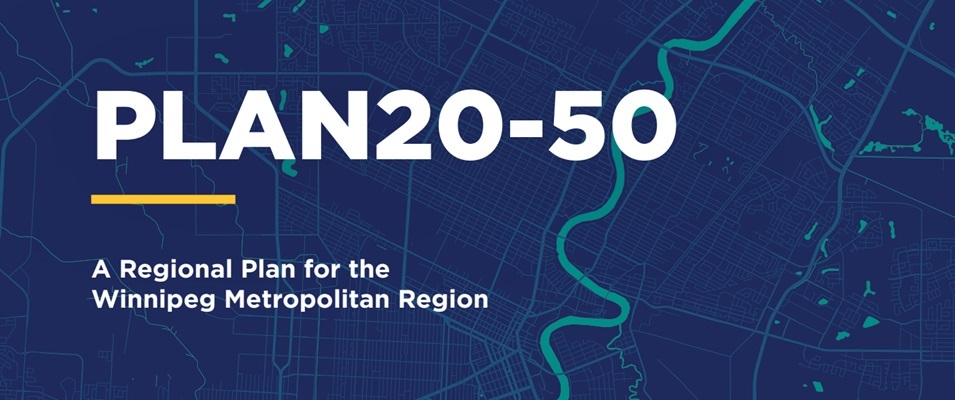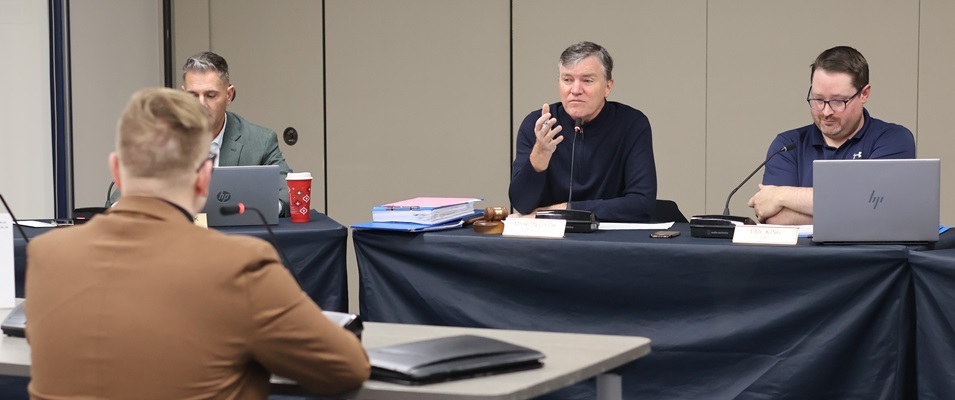
Mere weeks ago, the term “Plan20-50” would have meant nothing of significance to most residents of southeastern Manitoba. Today it has become one of the most controversial subjects possible.
This is true, at least, for many people living in the 18 municipalities of the Winnipeg Metro Region (WMR). It’s also true that there are at least as many residents in this region who have no idea why Plan20-50 has become such a hot topic in the first place.
This article endeavours to shed light from multiple perspectives to help readers make their own informed decisions. It is also highly recommended that those who are concerned about Plan20-50 take the time to read through the full document to best understand its details.
Plan20-50 and the WMR
The WMR is one of many capital planning regions across Canada. These regional organizations are designed to serve as collaborative bodies between a province’s capital city and its surrounding municipal governments.
The function of any capital planning region is to create networking partnerships so local councils can work cohesively on land use planning, economic development, environmental initiatives, and many other concerns of regional interest.
In Manitoba, the capital planning region, operating under a variety of titles, has been around for 26 years.
In 2021, the provincial government made changes to the Planning Act and, at the same time, changed the fabric of the WMR. Membership, which had been optional, became mandatory. Some municipalities without representation were pulled in, like Niverville and Selkirk.
Each municipality was required to appoint a representative to serve on the board of directors. Mayor Myron Dyck represents Niverville and Deputy Mayor Shane Pelletier represents the RM of Ritchot.
In addition to the 18 local government representatives on the board are four provincial appointees, including the board’s chair and vice chair. Two of these appointees represent the Manitoba Métis Federation and Treaty One.
One of the board’s first mandates, as set by the province, was to establish a 30-year plan for working together toward common goals. It was called Plan20-50.
The four policy lenses of Plan20-50 involve creating a plan for climate resilience; for the protection, enhancement, and restoration of water, land, and natural resources; for reconciliation; and for economic and technological transformation.
The WMR board set out to develop the many components of the plan. The province, alongside a host of experts, officials, and stakeholders, weighed in. The plan went back to the drawing board numerous times before the board deemed it ready to vote into existence.
According to Planning Act due process, the document has to pass through two public hearings, one in the city of Winnipeg and another in a rural community within the WMR.
The first was held in late July. It drew a significant crowd of residents who came to either listen or speak to Plan20-50.
On August 8, the second public hearing was scheduled to be held at the Niverville Heritage Centre. Due to the venue’s limited capacity of 300 and an overwhelming crowd, this hearing had to be postponed. The new public hearing date and location have yet to be announced.
Key Perspectives
In order to better understand the intricacies, intent, and potential impact of Plan20-50, The Citizen reached out to three key people.
Jennifer Freeman is the executive director for the WMR. As such, she was hired by the board of directors to take care of their many administrative responsibilities. She was not appointed by the province and has no WMR voting rights.
Ken Lee is a Winnipeg resident and professional chartered accountant. For 13 years, he acted as chief financial officer for the Progressive Conservative party. He’s also worked as their campaign manager in multiple provincial elections.
Finally, Clarence Braun is a lifelong Niverville resident, active volunteer, local entrepreneur, and someone with a keen interest in all levels of politics.
In the paragraphs to follow, we’ll look at some of the hot button issues inside Plan20-50 as well as the Planning Act and how these three individuals approach each one.
WMR Corporate Structure
In recent weeks, Ken Lee has become a vocal opponent to Plan20-50. He admittedly became aware of its existence only recently.
One of Lee’s primary objections, though, has more to do with the framework under which the WMR board operates. It’s this framework, he says, that makes the plan dangerous. Lee refers to Bill 37: The Planning Amendment and City of Winnipeg Charter Amendment Act, which directs the formation and operation of the WMR board.
Under this Act, the WMR is set up as a corporation without share capital. Further, the Act gives the corporation power to administer and enforce the development plan bylaw as well as zoning and building bylaws of municipalities.
For Lee, the financing of this corporate body is also a matter of grave concern.
The Act states, “The regional member municipalities must agree on the amount or proportion of funding that each member municipality is to contribute to meet the expenses of the planning region.”
If no agreement can be reached, “the minister must prescribe the amount or proportion of funding that each member municipality must contribute.”
Set up as a corporate body, seemingly separate from the provincial government, Lee wonders why they’ve been allotted such broad power and to whom they are accountable.
“I found it a little concerning that a private corporation would not only administer what they created but they get to enforce it too,” Lee says. “This private corporation that’s unaccountable to the taxpayer, unaccountable to the individuals who voted in their respective councils, they are now able to create, administer, and enforce a bylaw throughout the entire 18 regions. And yet they are using taxpayers’ money because the WMR is funded by the municipalities.”
For Lee, the only way to have real accountability is to have a process whereby the WMR board members are elected and function as a non-corporate entity.
Freeman calls it a common misunderstanding that the WMR operates as a private corporation. In reality, this body is a statutory corporation. Its lack of share capital simply means that it has no shares to hold or sell.
The definition of a statutory corporation is a government entity created by statute. These are corporations owned and controlled by a government to the extent provided for by legislation.
The Town of Niverville, for example, is an incorporated entity that operates under the authority of higher levels of government.
Braun says that it would be unreasonable to expect any provincial government to set up a corporation whose mandate is to carry out regional planning and then fail to exercise their own authority over that corporation.
The province, he adds, provides accountability to the WMR and has the ultimate authority to override its decisions. Case in point, Plan20-50 cannot be voted into existence without first passing through the hands of the Minister of Municipal Relations, Ian Bushie, for his approval.
Another major point of contention for Lee is the governance structure of the WMR board.
Looking at the WMR bylaws, a quorum—in other words, the minimum number of board members required for a vote—is only met when a majority of the board members are present.
More importantly, Lee notes, the mayor of Winnipeg has to be present or the vote cannot be held. Lee calls that a dictatorship, pure and simple.
“Even if all of [municipal leaders] get together and disagree with the city, we still lose,” says Lee. “The city wins every time.”
To that concern, Braun says that it’s actually imperative for the mayor of Winnipeg to be at the table when important decisions are made. He does, after all, represent the vast majority of the region’s population.
When one considers that the village of Dunnottar, with a population of 487, gets one vote at the table and the city of Winnipeg, with a population of nearly 800,000, also gets one vote, it should be clear why Gillingham’s absence would have a far greater impact than any other board member’s absence.
Reading through the Planning Act, Lee points out that the general powers of the WRM should also raise public concern. Primarily, he points to the WMR’s right to acquire land for the purpose of implementing the regional plan.
One tool the WMR has to accomplish this, if necessary, is expropriation. Expropriation refers to the process of taking private property without the owner’s explicit consent.
Lee says it’s downright scary to consider this power being used for the express purpose of carrying out Plan20-50’s objectives. He points out that this is especially true in light of the fact that population density targets have been laid out in the plan for every one of WMR’s municipalities.
For Lee, this leaves the door wide open for the confiscation of a person’s land in order to create enough housing units to meet the WMR’s targets.
Braun agrees that expropriation is an unfortunate mechanism for obtaining land, but it’s a tool that higher levels of government have always had. Since the WMR operates under the province’s authority, in Braun’s mind, their authorities are one and the same.
“Forcing people off their property is always a bad idea,” Braun says. “Having said that, there are times when the public good demands it.”
Braun gives the example of Manitoba Hydro’s bipole system, which was erected across the province in recent years. The government determined that it was needed in order to bring high-voltage electricity to every area of Manitoba.
Erecting the poles effectively and efficiently meant, at times, running them through people’s private property. Braun knows of a number of local farmers who refused to accept the compensation offered by the government in return for a piece of their land. In the case of these farmers, the land was expropriated since the bipole was deemed necessary for the public good.
Right or wrong, he says, it is a power they hold and it’s not new.
Addressing Red Flags
In just one article, it’s impossible to cover the extent of the concerns that opponents to Plan20-50 have expressed.
While Freeman doesn’t discount people’s right to question the principles laid out in the plan, she contends that much of the plan is being misinterpreted. For this reason, the WMR has created a page on their website with answers to the most frequently asked questions.
That page addresses the topics of 15-minute cities, priority access to roads, privately owned wells, and the plan’s approach to local environmental concerns.
“I think I know what most of the concerns are about,” Freeman says. “It’s about electronic vehicles, it’s about people thinking we’re forcing them to buy EVs, that people won’t be able to use their car, that they’ll have to take the bus. People think the plan is about closing off access to roads and wells and about imposing 15-minute cities. None of that is true.”
In the end, she says, it’s about the provision of essential services as opposed to putting restrictions on people’s lifestyles. It’s about exploring technologies that have lower environmental impacts while not imposing them on the unwilling.
As for the plan’s reference to “complete communities,” or what opponents call 15-minute cities, Freeman says that the intention here is also being misunderstood.
“Plan20-50 imagines neighbourhoods where people have access to stores and parks and seniors housing and schools,” Freeman says. “It doesn’t limit how people get around. Instead it’s about making sure that what we need most is close by. It’s about, ‘Can we grow old in our communities?’”
Freeman references the many communities in Manitoba that still don’t have the resources to allow aging residents to complete their lives in their hometown. This, she says, is exactly the kind of issue that Plan20-50 seeks to address.
For other residents, finding affordable housing options or solutions to the high costs of vehicle ownership are important. For this reason, the WMR board will be tasked with finding solutions, like Park and Ride options, so that anyone can live in any community they choose, without barrier.
Enhancing the region’s global competitiveness is also a primary objective of the WMR board.
“The reason we’re doing this is because we want to compete with other metro regions across Canada,” Freeman says. “We’ve heard from site selectors who want to establish companies here… but we’re being overlooked because we’re not planning together across our municipalities. It’s about land use planning and servicing. And when we lose out on these dollars, good companies with good-paying jobs go to Edmonton or Calgary or Quebec or any place that is planning on a regional level.”
The loss to Manitoba is felt in more than just the jobs not created, she adds. It’s also about the human resources—in other words, our trained workers—who are leaving our province for better jobs elsewhere.
Braun can attest to these losses on a local level. In recent years, he says, Niverville has lost opportunities when companies came inquiring about commercial space.
“We’ve had two or three bitcoin-mining companies reach out to us and try and locate in the industrial park, but we don’t have the electrical power to support them,” says Braun. “So they moved on.”
The fact that Plan20-50 still has flaws that need to be addressed is perhaps evidenced by the fact that, at the time of this writing, at least four of the 18 WMR municipalities have been vocal in their rejection of the plan as it stands.
At least two of those four also contend that mandatory municipal membership without an opt-out clause is unacceptable.
The Bigger Picture
Braun admits to feeling a level of bewilderment and disappointment when it comes to the polarization that Plan20-50 has evoked.
“We think so narrowly about our own self-interest,” Braun says. “I love my community, but we’re just a small part of something bigger. What is Niverville apart from everybody around us? What is Niverville if the city of Winnipeg isn’t there? It isn’t Niverville. These are legislated boundaries that we exist in, but they shouldn’t separate us as people. They’re just boundaries by which we function. If we enlarge the boundary and become more communicative, more relational, and more understanding, could we create something better together? If more people are at the table caring about the same things, does it make things more possible? Or do we just continue to fight each other?”




















